How to Write Killer Emails for Ecommerce
Email is an incredibly powerful tool in any ecommerce company's belt. Email marketing can drive a significant portion of your sales without paying expensive Amazon referral fees or Facebook advertising costs.
Yet many ecommerce marketers still fail to write emails that don't suck. In this article, we'll dive into how to write quality emails that increase trust and conversions with your audience.
Related reading: The Ultimate Guide to Email Automation for Ecommerce
Why Email is So Important
The email inbox is a sacred space.
Unlike Facebook, Instagram, and 99% of the internet, where companies pay to force their message in front of your eyeballs (“interruption marketing“), the email inbox is home to the invited sales message.
Sure, we all get spam and those annoying sextortion emails (or is that just me?), but as email providers have become more sophisticated at filtering out the junk, the chances are, if someone’s reading your email, they probably invited you in… aka opted-in to your email list.
That invitation shouldn’t be taken lightly.
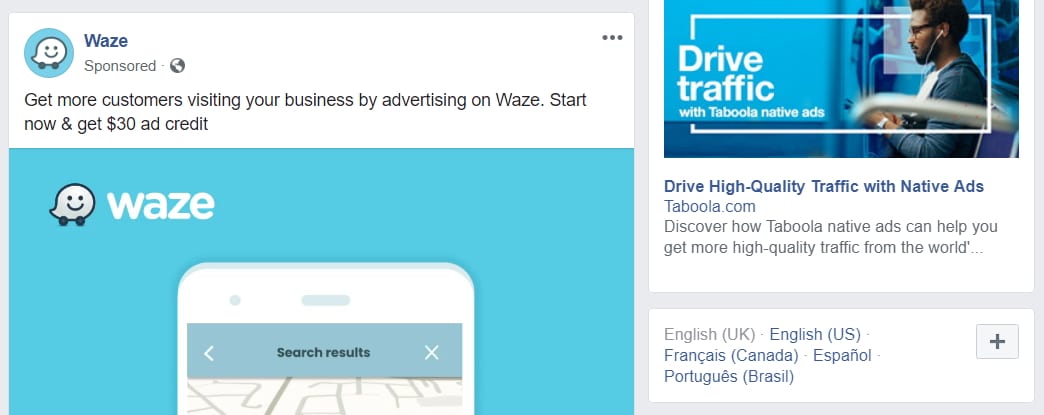
It’s an invitation to start a discussion, build a relationship, tell them about the solution you have for their problem… and then sell it to them.
And as long as you keep in their good graces, that invitation will allow you to contact them every month, every week or even every day (yes, there are people that sell to their list every single day, and their list actually look forward to receiving every email)… forever.
So, how do you stay in their good graces and make the most of that open door? Well, here’s my guide to writing emails that don’t suck.
First, let me define…
What email is and isn’t.
Email isn’t the endpoint for your reader. It’s not the final destination.
Email is a bridge.
The job of any email that doesn’t suck is to send its reader somewhere else.
Want to let your list know you posted a new blog post? The goal of your email is to get the reader to click through and go read it.
Want your list to buy your new super widget 2000? The goal of your email is to get the reader to click the link, go learn more about your super widget 2000, and buy it.
Want to remind them they abandoned their cart? The real goal of your email is to get the reader to click the link and complete their purchase.
Every Email Should Have One and Only One Goal
Before you even sit down to start writing, choose one objective for that email.
Anyone that’s ever emerged from a 30-minute YouTube hole after only jumping on Google to find out the name of that guy in that movie knows people’s attention spans are short.
Like a kitten in a laser-pointer testing facility, the next shiny-object is only seconds away from stealing their attention.
Email is no different.
Give your reader five ways to leave your email (i.e. links to five different things) and more than likely they’ll click on the first one that grabs their attention… and never come back to look at the others.
[Email newsletters obviously fly in the face of this advice, which is why I’m not a fan of them. But if you’re going to send an email newsletter, I would recommend making the first link out of the email the most important thing you want them to do.]That’s why you should stick to one objective per email:
- Want them to watch your latest YouTube video? Write an email with the goal of getting them to click through to your new YouTube video.
- Want them to buy your new product on Amazon? Write an email with the goal of getting them to click through to your listing.
- Want them to check out your new podcast? Write an email with the goal of getting them to click through to your latest episode.
Writing a newsletter using this technique keeps your reader focused. And a focused reader is far more likely to do the thing you want them to do.
Knowing this single objective also tells you what your Call-To-Action (CTA) should be.
Every Email Needs A Clear CTA
Remember that kitten in the laser-pointer factory? Every email should also have a clear CTA that tells the reader EXACTLY what you want them to do… i.e. the goal of your email.
If you want them to go read your blog post put in a link that says, “Click here to go read my latest blog post.”
If you want them to visit your new Amazon listing and use a 40% off coupon to buy your latest product, include a link that says, “Click here to visit our new Amazon listing and use code PROMO40 to get 40% off our super widget 3000.”
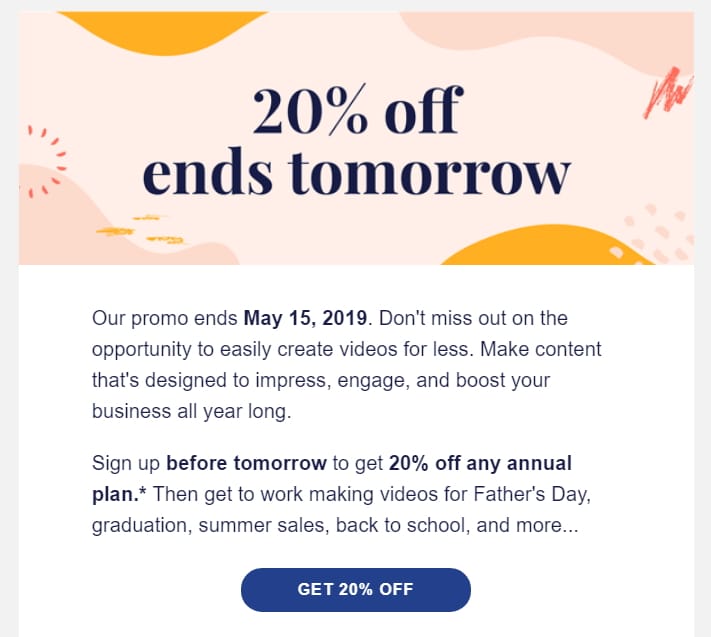
Never assume anything…
And remember, single objective, single objective, single objective.
Someone is way more likely to do what you want if you only give them one thing to do AND you make it really obvious what that thing is.
This focused singularity also gives you another benefit when it comes to writing your emails, you now have…
A Roadmap Of Exactly What You Need to Write
You’ve chosen a single goal for your email. That single goal means you also know your CTA. That CTA will come at the end, or near enough, of your email…
So now all you need to do is write an email that naturally leads up to that CTA and convinces the reader to take action.
By deciding your one goal you now have a basic roadmap for the content of your email, which makes writing your email way less daunting.
Let me give you an example:
- I sell in the golf niche and want my list to go buy my new super widget 4000…
- So I know my CTA will be something like, “Click here to get 40% off the new super widget 4000… “
- So I write a (true) story about Tom, one of my customers who bought my super widget 4000 and emailed me to let me know it reversed 10 years of back pain caused by his bad swing…
- And then I simply end the email with, “So if you’re like Tom and suffer from back pain due to your swing too… Click here to go buy the new super widget 4000.”
See how simple that is once you have your one goal? It eliminates writer's block because instead of staring at a blank page you already know the exact goal of what you need to write.
Using stories like this isn’t the only way to do it. You could also just email a picture of the super widget 4000 with a CTA telling people to go buy it.
But stories are worth the extra effort because…
Stories Help To Soften The ‘Ask’
Our brains are wired to receive information through stories. As Lisa Cron says in her book Wired For Story, “Recent breakthroughs in neuroscience reveal that our brain is hardwired to respond to story: the pleasure we derive from a tale well told is nature’s way of seducing us into paying attention to it.”
In other words, our very survival as a species depended on our brains wanting to hear stories.
Before humans could read, survival instructions were passed on by stories. Did you hear about caveman Steve? He ate that funky looking mushroom, turned purple and died. Better not eat those in the future, huh?
When you directly ask people to do something, their defenses naturally come up. Why do they want me to do that? What’s in it for them? Is this a trick?
But because our brains are wired to be receptive to stories, if you lead with a story you draw readers in AND give them a reason to do the thing you want them to do without them feeling like they’re being ‘sold’ too.
You can use stories about you, stories about your customers, stories taken from customer testimonials (like Tom and the super widget 4000) or your stories can even be anecdotal, e.g. you relay something you read or a story you saw on the news. As long as the story makes sense in context to the goal of the email, you’re good to go.
Story-based emails are very effective for building relationships with your list and writing emails they actually look forward to opening (Look forward to opening an email that’s going to sell them something? Shocking concept, right?)
And, hopefully, you can see the thought of writing stories doesn’t have to give you a Shakespearian panic attack.
A story can be short… “I spent 3 hrs stuck in a ditch this weekend after leaving my toolbox in the back of my other truck… facepalm. If you want to know how I got out, click here to read my latest blog post, ‘5 Ultimate Off-Roading Hacks To Get Out Of A Ditch.”
Or it could be a longer ‘creation story’ behind your new product, where you tell the reader why you choose that product, the problem it solves, how it’s benefitted you or one of your customers and how you think it can benefit them too.
No matter the length, the story has one job; hold the attention of the reader and create enough interest that they feel compelled to click through and do the one thing you want them to do.
Another powerful tool you can use to achieve this is curiosity.
Use Curiosity To Motivate People To Take Action
If the one goal of your email is to get your reader to click through to read your latest blog post, using curiosity can be a very powerful motivator.
Joe Sugarman talked at length in his classic book The Adweek Copywriting Handbook how he used curiosity to sell twenty million sunglasses using curiosity.
Our brains naturally want to seek out some sort of conclusion. TV scriptwriters have banked on this fact for decades by using cliffhangers to ensure viewers come back after the commercial break.
And you can utilize this in your emails too.
Take this blog post for example. If I sent you an email saying, “Check out my latest blog post about how to write emails that don’t suck,” maybe you’ll go read it, maybe you won’t.
But if I add curiosity and write, “Check out my latest blog post about how to write emails that don’t suck. In it, I reveal the single most important part of any email… and no, it’s not the subject line… “
See how that added curiosity makes it more compelling?
In fact, I bet your brain’s trying to answer that question right now, scanning back through this blog post trying to remember the single most important point I told you. That’s how potent curiosity can be. (You can stop scanning, I haven’t told you yet. But I will soon).
You can use curiosity in the body of your emails and it’s also great to use in subject lines too because…
Your Subject Line Has One Job
The subject line is the second most important part of your email. And it only has ONE job… get them to open your email.
That’s it.
Amongst all the other emails your list got that day, with all those subject lines stacked one on top of the other in their inbox, the only job of your subject line is to grab their attention long enough that they cannot help but open your email.
Because if they don’t open it, you may as well have not bothered sending it.
And the simplest way to do this is to pique their curiosity.
Now, I’m not talking about clickbait here. I’m not talking about using a subject line like, “Archeologists find first fossilized unicorn poop!” only to have them open the email and find there isn’t fossilized unicorn poop in sight, and you’re actually trying to sell them dog food.
Curiosity in the subject line has to be paid off in the body of the email. And paid off pretty quickly. Or you’ll lose their attention fast. And, after you’ve tricked them into opening one or two emails you’ll probably lose them as a subscriber too.
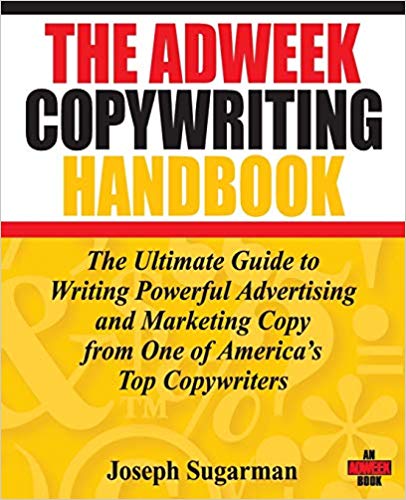
How to write subject lines that don’t suck is an entire blog post in and of itself, but you can’t go wrong with curiosity. Just make sure it ties back to something in your email.
For example, let’s say I’m in the off-roading niche and I want my list to read my latest blog post about the Do’s And Don’t Of Rock Hopping.
Sure, that blog post title could be the subject line of the email. But what if we added more curiosity and used something like, “One tool you should NEVER go rock hopping without.”
Or “One rock hopping tip that saved my life.”
If you were into off-roading, which of those three do you think you’d be more intrigued by…
… and therefore more likely to open?
I’m willing to bet the ones that made you curious enough to want to find the answer inside the blog post.
But remember, if you use curiosity in the subject line you have to pay it off inside the email.
So once they open our “One rock hopping tip that saved my life” email, we could immediately pay it off by telling them a very short story about how we were rock-hopping at the weekend, and it was raining, and the rocks were really greasy, and this crazy thing happened, and it inspired us to write this week’s blog post…. so if they want to know the one tool that saved our bacon they should really go check it out…
Using curiosity in this way fires off questions in the reader’s mind: What was the crazy thing that happened? What was the tool he used? How did it almost save his life?
And the brain wants answers to those questions.
So they click on your blog post… and you achieve your goal.
All of this assumes that you’re creating quality content and only have good intentions when it comes to your list. You’re in it to help them and add value, not just to trick them into doing what you want them to do. But that doesn’t mean you should be shy to ask for what you want.
If you truly believe your products or service can solve a problem for the members of your list, you’re actually doing them a disservice if you don’t try to sell your solution to them.
Which brings me on to my final two points…
Always Write to One Person
Emails that don’t suck never start, “I just wanted to let you guys know…”
Or continue as if you’re addressing the crowd at a rally.
People read emails alone. So you should talk to them that way. The same way you’d talk to a friend if you were writing them a letter. Just you, them and whatever you’d like to tell them.
A good way to ensure you do this is to imagine one person every time you sit down to write.
Even better, if you’ve created your customer avatar find a picture that represents them and stick it up someone near your computer. Then, every time you sit down to write an email, look at the picture and imagine you’re writing to them.
And lastly…
Maintain the Relationship With Your List
Don’t just write to them when you want something. No one likes the friend that only hits them up once a month when they need a ride somewhere.
If you only email your list every couple of months to launch a new product you won’t build a relationship with them and the list will be as good as worthless.
If you want to build a relationship, which will lead to more profits, you need to commit to consistently emailing them and looking to provide value first.
The Most Important Part of an Email
So that’s everything you need to know about how to write emails that don’t suck.
I mean, apart from the fact I still haven’t told you the single most important part of any email yet.
Still curious?
Well, it’s actually your email address.
That’s the first thing, anyone, you send an email to looks at, not the subject line.
And if your email address starts sales@ or offers@ or some other departmental prefix you’ve already warned them you’re probably about to try to sell them something.
So, whenever possible, use your first name in your email address, be the human contact people want and start to build a relationship so they look forward to seeing your name appear in their inbox.
Conclusion
Writing emails that don’t suck doesn’t have to be hard. View each email as a bridge to where you want the reader to go, not a destination. Choose one goal for each email and use that goal to create your CTA. And then use that CTA as a guidepost to show you what to write.
Remember that your subject line only has one job, to get them to open your email. And that you can use curiosity in the subject line, and in the body of the email, to motivate your readers to do what you want, and stories to soften the ‘ask.’
And finally, in order to have a ‘healthy’ list, you have to maintain the relationship. The people that receive your emails are just that, people. Don’t forget that, treat them with respect and add value to their lives and they’ll repay you with their loyalty.
Does your ecommerce company need help writing better email sequences or Amazon product copy? John can help your company, small or large, increase sales through better copywriting. He can be contacted at john@johnrobbcopywriter.com.
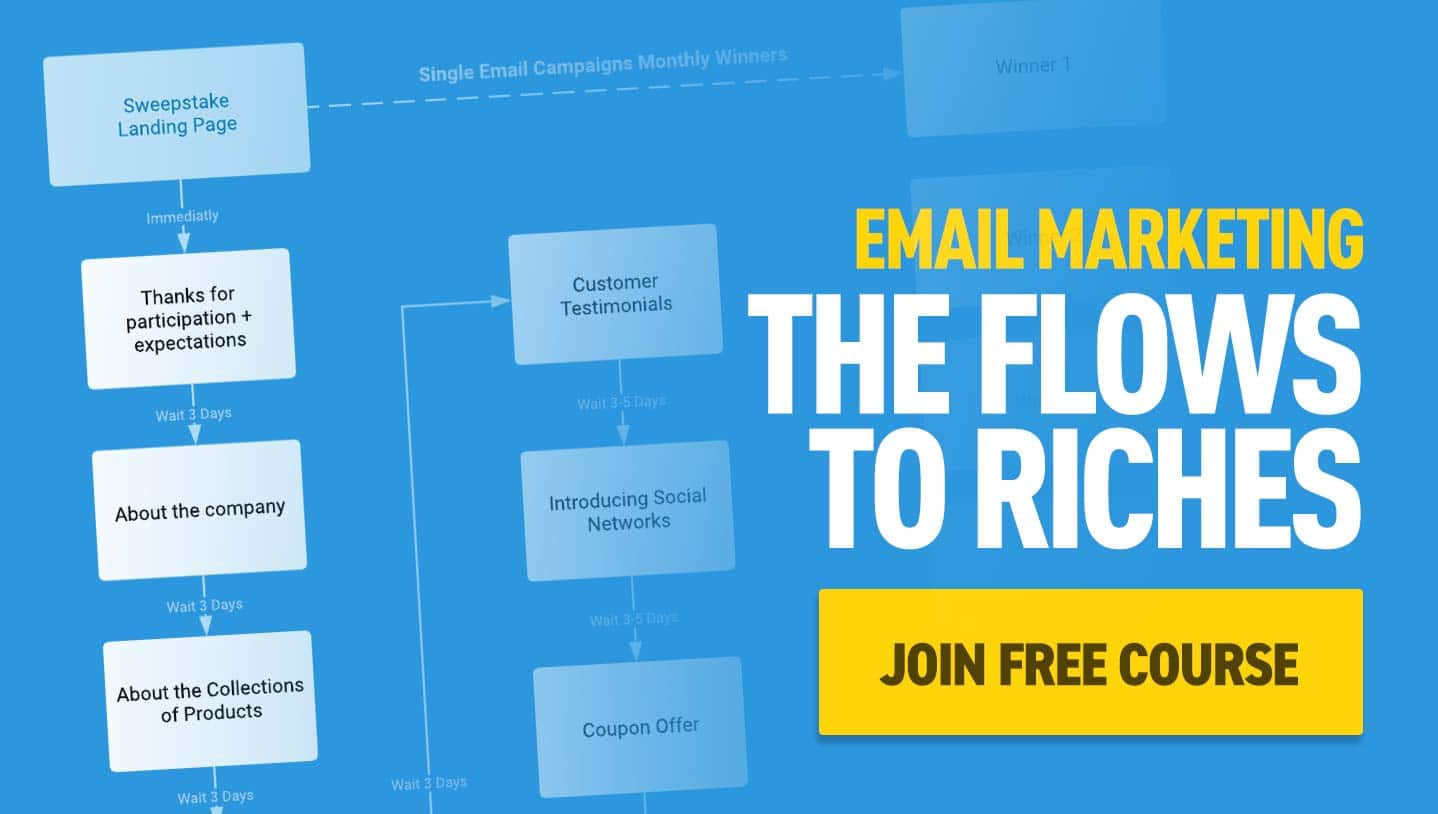
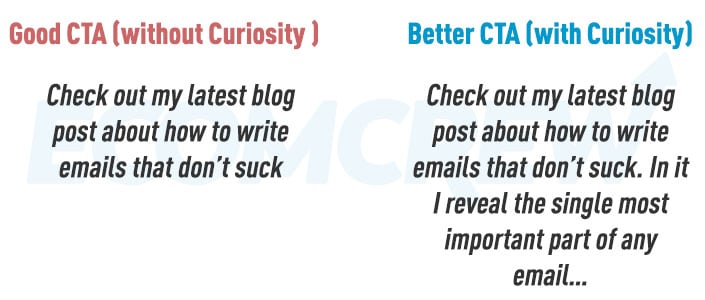
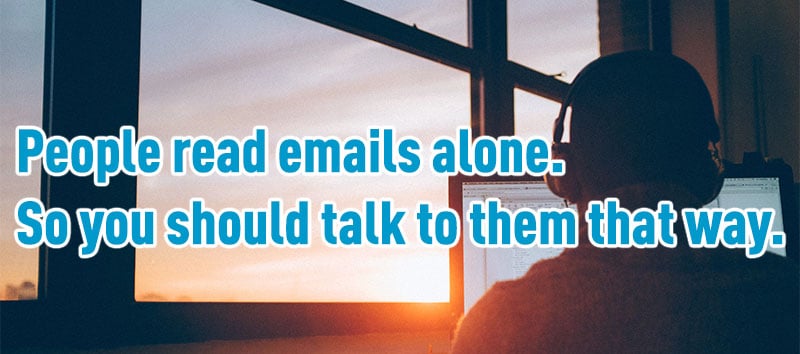




This guide was great, thanks for writing it, sometimes it’s so simple (thinking about the intentions of each thing you’re doing.
Thanks Lance! Glad it was helpful.